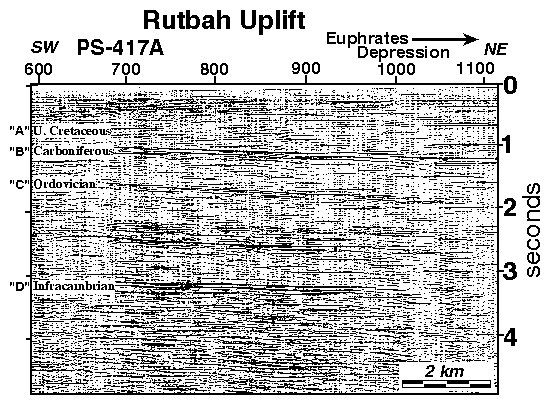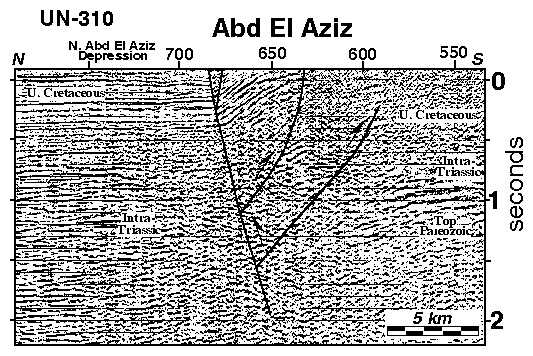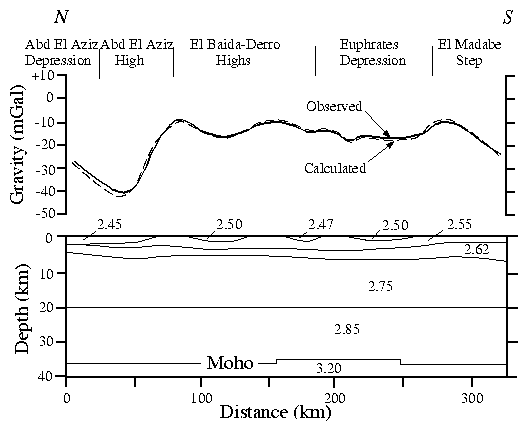Home | Results Summary | Publications | Participants | M.East / N.Africa Home
![]()
A crustal-scale geotransect across the northern Arabian platform, oriented north-south in eastern Syria, reveals an alternating series of basement uplifts and basins separated by predominantly transpressional fault zones above an effectively uniform crust. Four major tectonic provinces are crossed along a 325 x 100 km corridor that extends from the Iraqi border in the south to the Turkish border in the north: the Rutbah uplift, the Euphrates depression, the Abd el Aziz structural zone, and the Qamichli uplift. These features are the manifestations of reactivated Pre-Cenozoic structures that responded to forces acting along nearby Arabian plate boundaries, particularly Cenozoic convergence and collision along the margins of the northern Arabian platform, i.e., the Bitlis suture and the East Anatolian fault in southern Turkey and the Zagros suture in Iran and Iraq.
The database for this study consists of 3000 km of industry seismic reflection data, 28 exploratory wells, geologic, and Bouguer gravity maps. The deep crustal structure and, in part, the basement geometry along this transect are inferred from two-dimensional modeling of Bouguer gravity, whereas the shallow (about 8 km) structure is constrained primarily by well and seismic data.
Features of the geotransect reveal:
Figure 1. Example of the seismic reflection character of the Paleozoic section on a portion of line PS 417A.

Figure 2. Example of seismic reflection data across Abd el Aziz mountain, line UN 310. Note undeformed sedimentary basin rocks to the north.

Figure 3. Gravity model used to constrain the structure of the mid to deep crust along the transect. Gravity values are in units of g/cm3. The observed Bouguer gravity data can be modeled by a simple crustal model with very minor crustal thinning beneath the Euphrates depression. "Major" anomaly variations can be explained by changes in basement depth, i.e., sediment thickness. See text for discussion of other data used to constrain this model.

Go back to Summary of Results
Go back to Cornell Syria Project Welcome Page